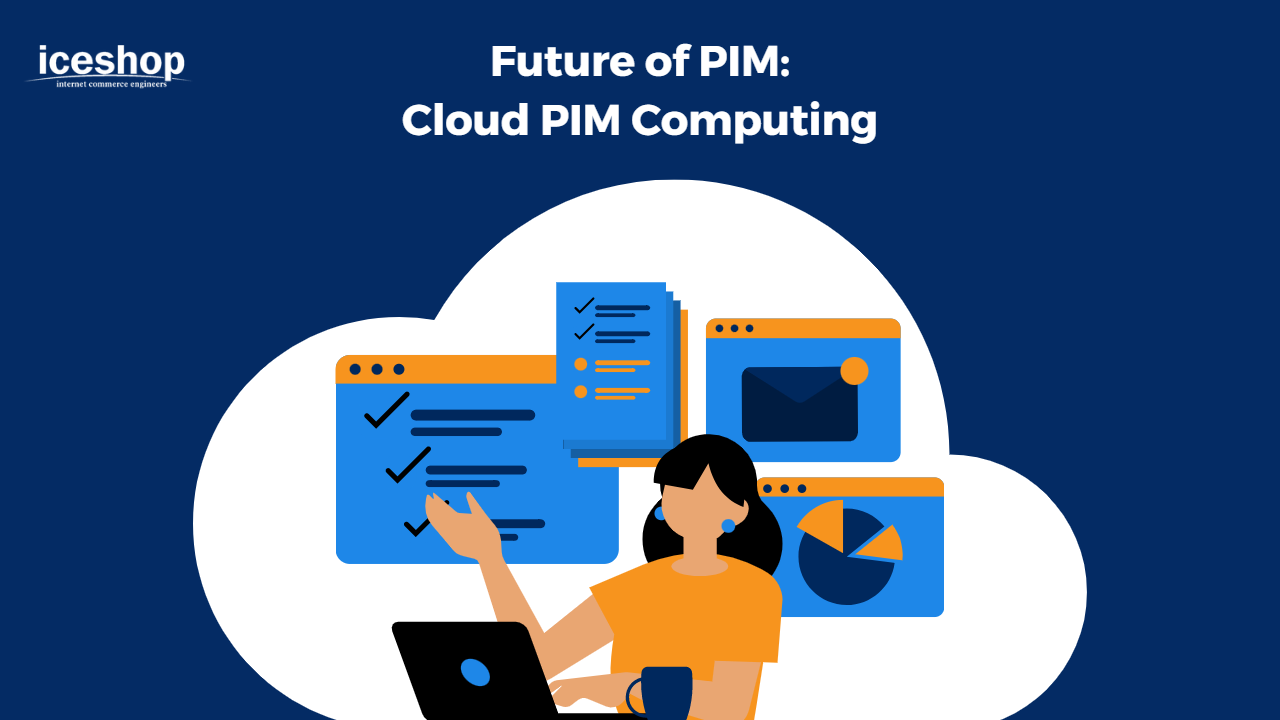A cloud-based PIM solution is hosted off-site by a third party – that might be Amazon Web Services or Google. Because it is a cloud-based there is no need to worry about having tons of servers. PIM vendors take full responsibility for maintaining the source code, security, and feature upgrades. The customer has the option to store data in the cloud, on the local drive, or both. Moreover, the cloud offers massive storage capabilities for all product data and digital assets. Cloud PIM computing is continuously growing in popularity due to its flexibility and scalability.
Scaling, Syncing and Securing Data
Cloud-based PIM computing relies on scalable and reliable data storage solutions provided by cloud platforms. These solutions offer various storage options, scalability mechanisms, and data redundancy to accommodate growing data volumes and ensure high availability.
One option for data storage is object storage – scalable and cost-effective storage solution for storing unstructured data such as files, images and videos. Object storage systems provide high durability and availability while allowing easy access to data through APIs. Another option is block storage which is a type of storage that provides raw block-level storage capacity to virtual machines or instances. This type is often used for databases and applications that require direct access to block devices.
The integration process of PIM systems with cloud infrastructure involves assessing the PIM system requirements, selecting a suitable cloud provider, establishing connectivity through secure networks or APIs, migrating data to the cloud environment, integrating the PIM system with the cloud through interfaces or connectors, implementing data synchronization mechanisms, ensuring security and access control, conducting through testing, and setting up monitoring and maintenance processes. It is important to consider compatibility, scalability, reliability, security, and compliance factors throughout the integration process.
Unlocking Business Advantages with Accessibility, Collaboration, Cost Savings, and Security
Cloud-based PIM computing brings numerous advantages to businesses. Firstly, it enhances accessibility and availability of product information by enabling users to access and update data anytime, anywhere, and from any device with an internet connection. This real-time access facilitates quick decision-making and responsiveness. Additionally, cloud infrastructure ensures high availability, reducing the risk of data loss or system downtime.
Secondly, cloud PIM computing promotes collaboration and data sharing among teams. By providing a centralized platform, it allows teams to easily share, update, and manage product information in real-time. Concurrent work is supported, eliminating version control issues and enhancing communication and coordination. Collaborative features such as document sharing, commenting, and task management further streamline teamwork and boost productivity.
Furthermore, cloud PIM computing offers cost-effectiveness and scalability. It eliminates the need for upfront investments in hardware, infrastructure, and software licenses. Businesses can take advantage of flexible pricing models, paying only for the resources they use. Maintenance and upgrades are handled by the cloud provider, reducing additional IT management expenses. Moreover, cloud infrastructure enables easy scalability, allowing businesses to scale up or down their storage and computing resources based on demand. This flexibility optimizes resource utilization, avoids overprovisioning, and helps control costs.
In addition to these benefits, cloud PIM computing ensures data security and disaster recovery. Cloud PIM systems implement robust security measures, such as encryption and access controls, and cloud providers invest heavily in data security to safeguard information. Regular backups and built-in disaster recovery capabilities contribute to data resilience and business continuity. Lastly, cloud PIM systems can seamlessly integrate with other cloud services, such as CRM and ERP platforms, providing a unified view of product information and streamlining business processes.
Cloud PIM: Overcoming Challenges, Maximizing Potential
Cloud-based PIM computing presents several challenges and considerations that organizations should be aware of. Firstly, data migration and integration can be complex when moving existing data from on-premises systems or legacy PIM solutions to the cloud. To ensure data integrity and consistency during the migration process, careful planning is required. Furthermore, effectively addressing integration challenges may be necessary when integrating the cloud PIM solution with platforms such as CRM or ERP.
Performance and latency are important factors to consider in cloud environments. The physical distance between users and the cloud infrastructure can result in increased latency, affecting the responsiveness of the PIM system. Organizations need to assess network connectivity, select a cloud provider with geographically distributed data centers, and optimize system architecture to minimize latency and ensure acceptable performance levels.
Vendor lock-in is another consideration when adopting cloud PIM computing. Transferring large volumes of data and complex integrations to a different cloud provider can be challenging and costly. To mitigate this risk, organizations should evaluate interoperability, data portability, and the availability of standardized APIs when selecting a cloud provider.
Choosing the right cloud provider is crucial for successful cloud PIM implementation. Organizations should consider factors such as the provider’s reputation, security measures, compliance certifications, scalability options, and support capabilities. Evaluating the provider’s track record, customer reviews, and their ability to meet specific industry requirements can aid in making an informed decision.
Thorough evaluation and strategic decision-making can help organizations address these challenges and maximize the benefits of cloud PIM computing.
Price, Customization, and Suitability Challenges
When it comes to price, implementing and maintaining a cloud-based PIM solution can be costly. Businesses may need to pay subscription fees or usage charges based on the storage and data transfer requirements. Depending on the size of the organization and the volume of data being managed, these costs can add up significantly over time. Additionally, businesses might also incur expenses for training employees to use the cloud PIM system effectively.
The lack of customization is another challenge. Cloud PIM solutions typically provide a standardized set of features and functionalities to cater to a wider range of businesses. While this is suitable for many, it may not align perfectly with the specific needs and workflows of every business. Cloud PIM systems often have limited customization options, and businesses may not have the flexibility to extensively tailor the solution to their unique requirements.
Data Security and Privacy Concerns: Cloud PIM systems involve storing sensitive product information on third-party servers. Although reputable cloud providers implement strong security measures, some businesses may have concerns about data security and privacy, particularly when dealing with confidential or proprietary product data. Adequate due diligence and selecting trusted cloud providers are crucial to mitigate these risks.
The disadvantages of cloud PIM computing include the potential high costs, limited customization options, data security and compliance concerns. Before deciding whether a cloud PIM solution is the right fit, businesses need to evaluate the specific needs, budget constraints, and regulatory requirements.



